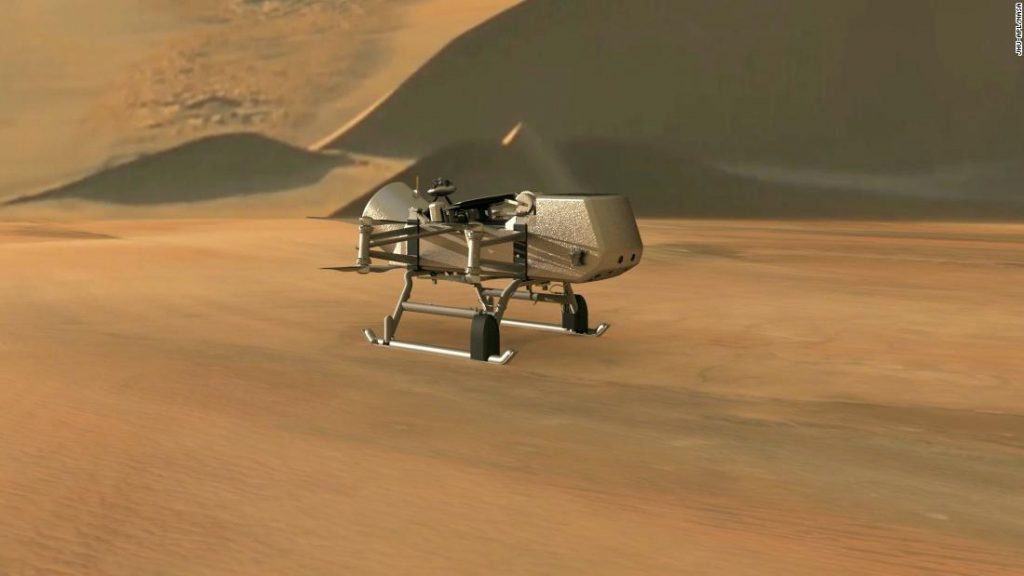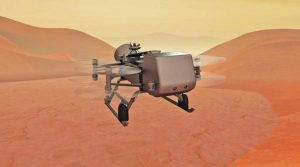NASA announced today its next big mission to explore our Solar System. The agency has greenlit a mission called Dragonfly that will send a spacecraft to the surface of Titan, Saturn’s largest moon. Dragonfly, the latest of NASA’s New Frontiers program, was selected because of Titan’s unique makeup, which makes its one of the more promising candidates for discovering signs of microbial life.
During its travels, Dragonfly will make stops to collect samples from compelling regions of Titan. Elizabeth Turtle of Johns Hopkins University Applied Physics Laboratory, said dune fields on the moon are particularly attractive areas for an explanation because “The material in the sand particles may be widely sourced,” meaning the drone could pick up materials from across the moon beyond where it will be able to explore.
Dragonfly’s baseline mission will conclude when it reaches an impact crater known as Selk. According to Turtle, the crater is at a low-latitude and should be accessible to the drone. “We know this area quite well, there’s a lot of data from different instruments in this region,” she said. Turtle called the crater a “high-priority target” because it’s a place where “organics and liquid water may have mixed in the past.” It’s believed that liquid water and complex organic materials including hydrogen, oxygen and nitrogen — the building blocks of life — may have existed together for tens of thousands of years. Dragonfly is the fourth mission launched through the New Frontiers program, which NASA uses to fund particularly ambitious space exploration missions throughout the Solar System. Prior missions include New Horizons, which flew by Pluto in 2015 and continues to explore the Kuiper Belt beyond it; Juno, which ventured to Jupiter and is currently continuing its mission to collect data from the gas giant; and OSIRIS-REx, which began orbiting the near-Earth asteroid Bennu earlier this year.





